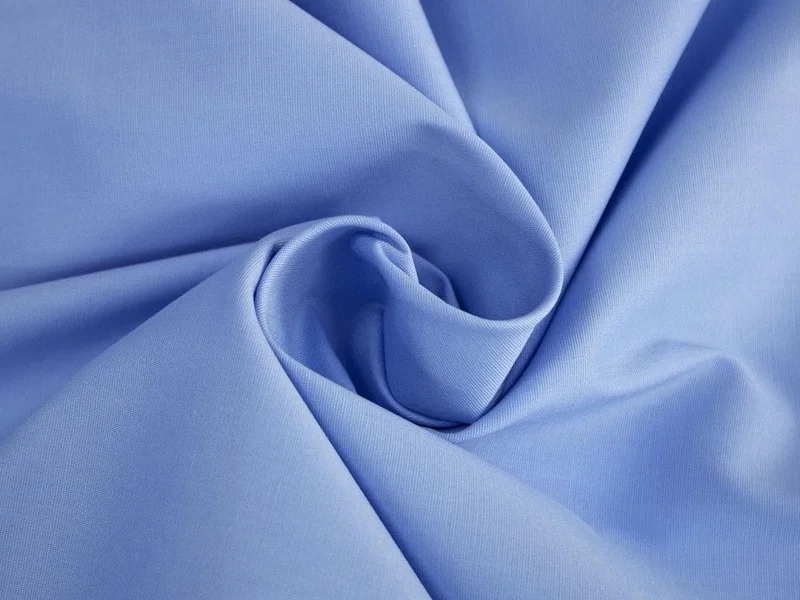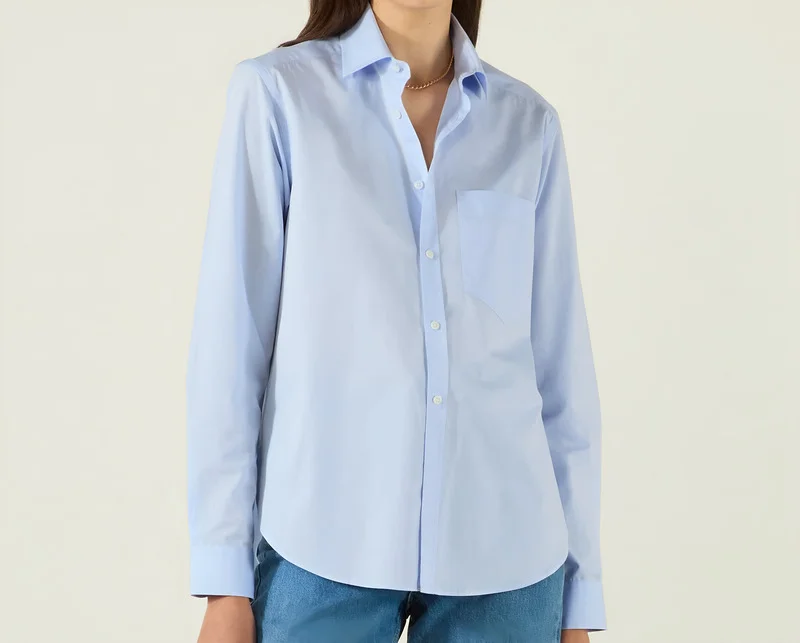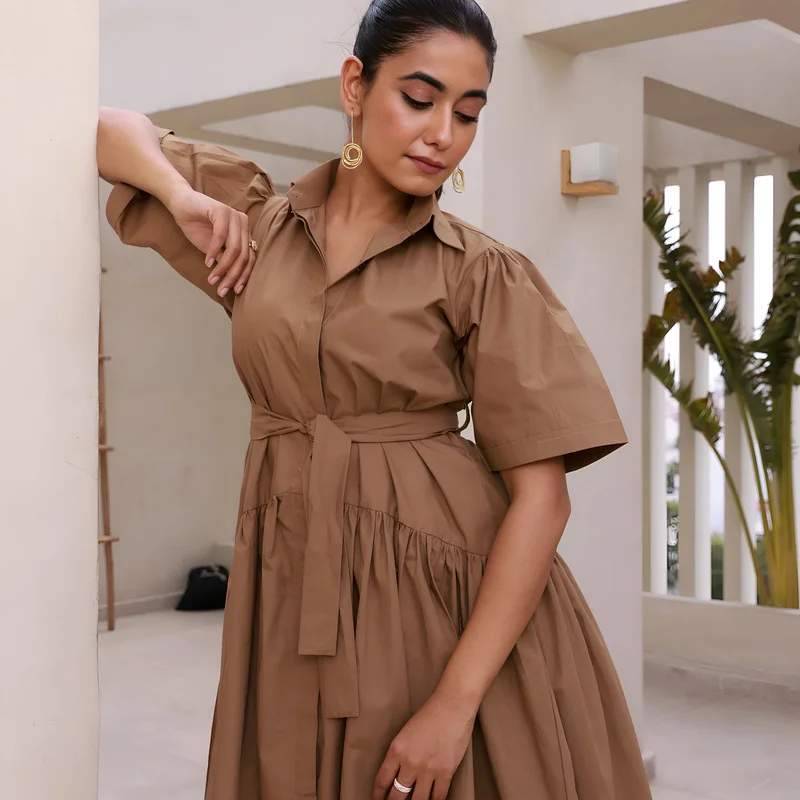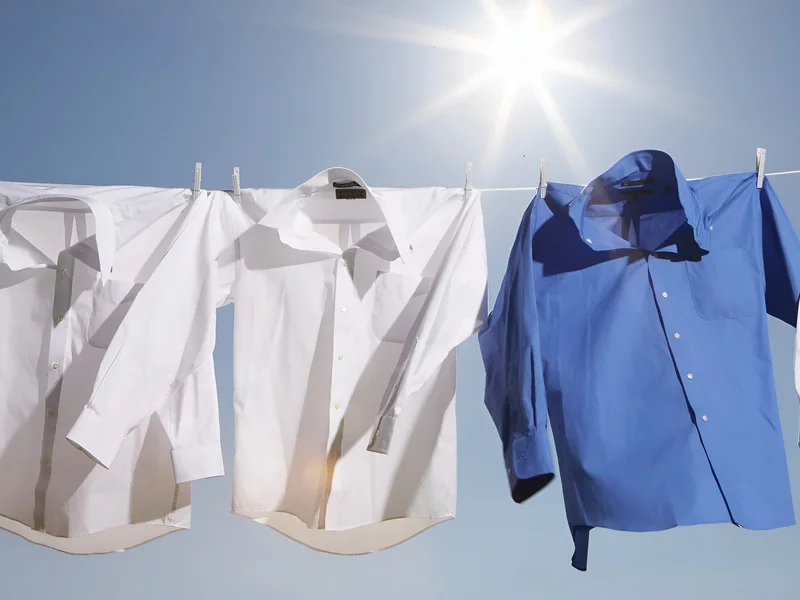What Is Poplin? Simple Guide: Uses, Feel, Materials, Care
Poplin is a popular fabric you might see or wear often. It is known for being strong and smooth, often made from cotton using a special weave. You’ll find it in clothes like shirts and dresses because it feels crisp, looks smart, and is easy to care for. This makes poplin a great choice for everyday outfits and even dressier clothes.
1. What is poplin?
Poplin fabric is a type of material known for its smooth feel and strength. The special thing about poplin is its plain weave.
- It uses fine threads going lengthwise (called warp) and thicker threads going crosswise (called weft).
- This weave creates a very subtle ribbed texture, but overall, poplin feels smooth to the touch.
Poplin often has a lightweight weave, making it comfortable. This gives it a characteristically crisp feel, often referred to as a “crisp handfeel.”. It’s important to remember that poplin describes the weave, not just the material it’s made from, though cotton is very common.

2. What is poplin made of?
Poplin can be made from several different material fibers. The fiber used changes how the poplin feels and behaves.
2.1. Most common: Cotton
Cotton poplin is very popular. This is because cotton makes the poplin soft, breathable (lets air pass through), and comfortable to wear against the skin.
2.2. Other materials
Poplin can also be made from:
- Silk poplin: This version is very smooth, has a lovely shine, and feels luxurious.
- Wool poplin: Wool poplin is warmer and often used for suits or clothing for cooler weather.
- Polyester or blends (like cotton mixed with polyester): Polyester poplin or poplin blends are usually very durable, resist wrinkles well, and are easy to care for. However, they might not be as breathable as 100% cotton poplin.
2.3. How material changes poplin
The choice of material fiber really affects the poplin’s final properties. For example, cotton poplin is great for summer clothes because it’s breathable, while a wool poplin is better for warmth. Polyester blends can make poplin more wrinkle-resistant, which is good for workwear or travel clothes.
3. What makes poplin special?
Poplin has several features that make it a favorite fabric for many items. Poplin is valued for its drape and durability.
- Smooth surface: Poplin has a noticeable surface smoothness. This makes it feel nice against your skin and provides a great base for printing designs.
- Strong and durable: Even though it can be lightweight, poplin is a sturdy fabric that holds up well to wear and washing.
- Lightweight and breathable: Especially when made from cotton, its weave allows air to flow, making it comfortable in warm weather.
- Holds shape well: Poplin isn’t very stretchy (unless mixed with stretchy fibers). It keeps its structure, helping garments look neat.
- Good for printing and colors: The smooth surface of poplin means poplin prints and colors look clear and vibrant.
- Resists wrinkles (sometimes): This depends on the fiber. Pure cotton poplin can wrinkle. However, wrinkle resistant poplin often comes from blends (like cotton-polyester) or special fabric treatments.
- Easy to sew: Poplin is a stable and easy to sew fabric, making it good for home sewing projects.
- Drapes nicely: Poplin’s ability to drape well means the fabric hangs attractively and flows nicely when made into clothing.

4. How is poplin fabric made?
The way poplin is made gives it its special qualities. Here’s a simple look at the poplin weaving process.
- Simple weaving process: Poplin is made using a plain weave. Imagine threads woven over and under each other, like in a simple basket.
- The ribbed effect: The subtle horizontal ribbed texture comes from using finer threads in one direction (warp) and slightly thicker threads in the other direction (weft).
- Different weights: Poplin can have different fabric density/weight. Some poplins are very light and airy, while others can be a bit heavier and more structured.
5. What is poplin used for? Everyday examples
Poplin is very versatile, so you’ll find it in many poplin clothing items and other products.
- Shirts and blouses: Its crispness, comfort, and ease of care make it a perfect material for both formal and casual shirts.
- Dresses: A poplin dress is often lightweight and can hold shapes like A-lines or shirt dresses well.
- Kid’s clothes: Poplin is durable, easy to wash, and comfortable for children.
- Pajamas: Soft cotton poplin is breathable and great for sleepwear.
- Light jackets and raincoats: Some poplin is treated to be water-resistant, making it suitable for light outerwear.
- Uniforms: Poplin uniforms are common because the fabric is durable, looks neat, and is easy to clean.
- Home items: Its smoothness and strength are good for bed sheets, pillowcases, and light curtains.

6. Good things and not-so-good things about poplin
Like any fabric, poplin has its good points and some things to be aware of.
6.1. Good things
- Smooth and comfortable: Feels good against the skin.
- Strong and durable: Lasts well with proper care.
- Breathable: Especially cotton poplin, good for warm weather.
- Crisp look: Gives garments a smart, neat appearance.
- Takes color/print well: Designs look sharp and vibrant.
- Generally easy care: Most poplin is machine washable.
6.2. Not-so-good things
- Can wrinkle easily: Especially 100% cotton poplin; it often needs ironing.
- Not very stretchy: Traditional poplin has little give. For stretch, look for stretch-enhanced poplin, which has fibers like spandex or elastane blended in.
- May not be warm enough: For very cold weather, it’s usually too light on its own.
- Can be sheer: Very fine or lightweight poplin can be slightly sheer and may require a lining in some garments.
7. Looking after your poplin: Care tips
Taking good care of your poplin items will help them last longer.
- Washing: Most poplin can be machine-washed in cool or warm water. Be careful with hot water for 100% cotton poplin as it might cause shrinkage.
- Drying: Tumble dry on low heat. Hanging poplin items to dry can help reduce wrinkles.
- Ironing: Poplin, especially the 100% cotton variety, often needs ironing. Use a medium-hot iron. Ironing while the fabric is slightly damp can make it easier.
Always check the label! This is the most important tip. The care label on your garment will give you specific instructions. Having accurate care labels is vital for keeping clothes looking their best. It usually answers “What are the washing instructions for poplin?” for that specific item.

8. Poplin and your brand: Why knowing fabrics helps?
If you create or sell clothing, understanding apparel fabrics like poplin is very helpful. This knowledge helps you choose the right materials for your products.
8.1. Smart choices
Knowing about poplin helps you pick the right material for your product ideas. For instance, if you want to make a crisp, professional-looking shirt, poplin is an excellent choice.
8.2. Telling your story
Understanding fabrics allows you to better explain your product’s quality and value to your customers. This contributes to your overall brand identity design.
8.3. Thinking about details
- In apparel product branding, small details like labels and tags make a big difference. Your knowledge of poplin informs the best branding material selection to complement the fabric.
- A quality poplin garment, such as a smooth shirt or a well-draped dress, deserves equally good branding. For example, Packlove offers soft custom woven labels (a label made by weaving threads together, like on clothing necklines) that feel comfortable inside a poplin shirt, or crisp printed hang tags that can beautifully display your brand information.
- Knowing your fabrics helps you choose the perfect finishing touches, especially if you run a fashion business or a boutique clothing line. The best brand labels for poplin will enhance the garment, and choosing the right custom product tags for poplin completes the professional presentation.
9. Quick questions: Poplin FAQ
Here are some common questions about poplin:
9.1. Is poplin good for summer?
Yes, poplin is great for summer wear, especially when made from cotton. Cotton poplin is lightweight and breathable, which helps keep you cool.
9.2. Does poplin shrink?
Shrinkage can happen, particularly with 100% cotton poplin, if it’s washed in hot water or dried on high heat. Some poplin is pre-shrunk. Always check the garment’s care label for specific instructions.
9.3. Is poplin stretchy?
Traditional poplin is not very stretchy because of its woven structure. However, you can find stretch poplin, which is blended with a small amount of stretchy fiber like elastane or spandex to give it some stretch.
9.4. Is poplin the same as broadcloth?
Poplin and broadcloth are very similar, and sometimes the terms poplin vs broadcloth are used for the same thing. Historically, poplin had a slightly finer rib than broadcloth, which was known for its dense weave. Today, the differences are often minimal.
9.5. Is poplin eco-friendly?
Whether poplin is eco-friendly depends on the fiber it’s made from.
- Organic cotton poplin is a more eco-friendly choice because organic cotton is grown without harmful pesticides.
- Poplin made from recycled materials (like recycled polyester) is also a better option for the environment.
- Standard cotton poplin uses a lot of water and potentially pesticides during cotton farming. Standard polyester poplin uses fossil fuels.
If you are using sustainable textiles like organic poplin for your products, Packlove can also provide eco-friendly branding options for sustainable textiles branding, such as labels and tags made from recycled or organic materials.
Read more:
To sum up, poplin is a wonderfully versatile fabric. It’s known for being smooth fabric and strong fabric, with a special weave that gives it a crisp feel. You’ll find it in many clothes like shirts and dresses, made from various materials, most commonly cotton. Poplin is generally easy to look after, making it a practical and stylish choice for many uses.
We hope this guide helped you understand poplin! If you’re creating products and need advice on branding them, the team at Packlove is always here to help with expert suggestions for labels, tags, and packaging.






















